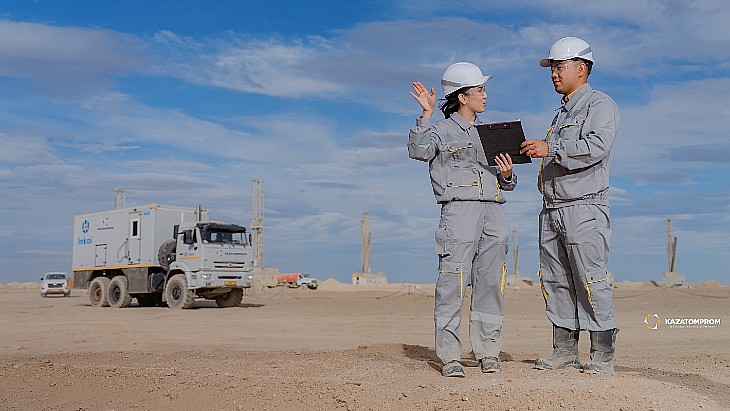Central Asia served as an important source for uranium in the former Soviet Union. Uranium was mined for more than 50 years and uranium ore was also imported from other countries for processing. A large amount of radioactively contaminated material was placed in mining waste dumps and tailing sites.
Most of the mines were closed by 1995 but very little remediation was done before or after the closure of the mining and milling operations. The contaminated material is a threat to the environment and the health of the population. The hazards include the possible pollution of ground and surface water in a key agricultural centre of the region.
The village of Shekaftar was founded in 1944 as part of the development of uranium-mining operations. Located in the south-western part of the country close to the Uzbek border, it is home to around 3700 residents. Most of the mine sites were located in the village and very close to residential areas.
The Shekaftar mining complex included three closed mines and eight mining-waste disposal areas that contained about 700,000 cubic metres of waste from mining operations. The remediation works included the closure of mine openings, the removal of waste-rock dumps and the demolition and disposal of mining facilities.
Following the completion of remediation works in Shekaftar, locals received new areas for private, communal and business use. The scope of works also included upgrades to key local infrastructure such as a water pipeline, as well as a bridge and roads.
The village of Min-Kush - located south of Bishkek on the banks of the Min-Kush River in the Tian Shan Mountains - was also built to support uranium mining. It was heavily affected when uranium mining was discontinued in the late 1960s and following the dissolution of the Soviet Union in the early 1990s, but today around 3200 people still live there.
The remediation project at Min-Kush is now complete, reducing risks that the mining legacy posed to its residents. The demolition of the former ore-processing plant facilitated the creation of clean, flat surfaces, which can now be used for community purposes, including a venue for traditional nomad sports. This will help generate more local revenue by attracting tourists. Further remediation works, funded by the Commonwealth of Independent States, remain ongoing.
The Shekaftar and Min-Kush sites were certified and accepted by the Kyrgyz authorities in December 2021 and February 2022 respectively, the EBRD said.
The work was funded by the Environmental Remediation Account for Central Asia (ERA), established and managed by the EBRD on behalf of the international donor community. Work on other sites in Kyrgyzstan is expected to begin soon. It will follow a Strategic Master Plan developed by a group of experts under the guidance of the International Atomic Energy Agency. The plan sets out a detailed blueprint for the environmental remediation of priority sites in Kyrgyzstan, Tajikistan and Uzbekistan.
These three countries are currently in the scope of ERA, the latest nuclear decommissioning fund managed by the EBRD. To date, ERA has received support through contributions from the European Commission, Belgium, Lithuania, Norway, Spain, Switzerland and the USA.

.jpg)



_57190.jpg)
_49098.jpg)






